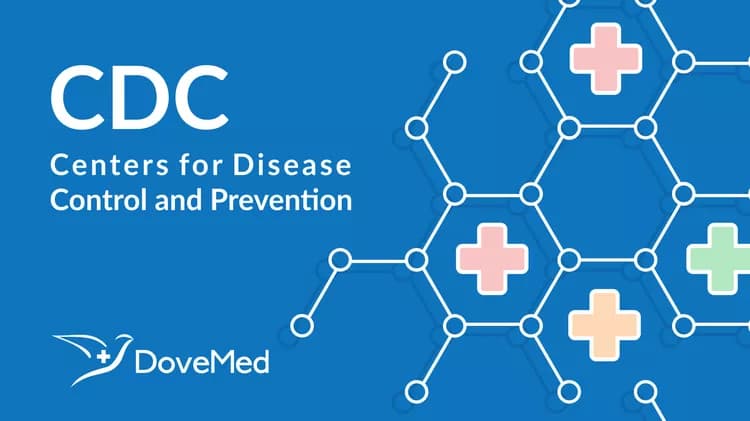
Progress Erased: Youth Tobacco Use Increased During 2017-2018
About 4.9 million middle and high school students were current users (used in the past 30 days) of some type of tobacco product in 2018, up from 3.6 million in 2017. This increase—driven by a surge in e-cigarette use—erased past progress in reducing youth tobacco product use, according to a new Vital Signs report published by the Centers for Disease Control and Prevention (CDC).
With the exception of e-cigarettes, no change was found in the use of other tobacco products, including cigarettes, resulting in a net increase in overall tobacco product use during 2017-2018. There were 1.5 million more youth e-cigarette users in 2018 than 2017, and those who were using e-cigarettes were using them more often, as was previously reported
external icon
in November 2018. Frequent use (more than 20 days in the past 30 days) of e-cigarettes, increased from 20 percent in 2017 to 28 percent in 2018 among current high school e-cigarette users.
More than 1 in 4 (27.1%) high school students and about 1 in 14 (7.2%) middle school students currently used a tobacco product in 2018. For the fifth year in a row, e-cigarettes (20.8%) were the most commonly used tobacco product among high schoolers, followed by cigarettes (8.1%), cigars (7.6%), smokeless tobacco (5.9%), hookah (4.1%), and pipe tobacco (1.1%). Among middle schoolers, e-cigarettes (4.9%) were also the most commonly used tobacco product, followed by cigarettes (1.8%), smokeless tobacco (1.8%), cigars (1.6%), hookah (1.2%), and pipe tobacco (0.3%).
Many youth tobacco product users are also using multiple products. Among current tobacco users, about 2 in 5 (1.68 million) high school students and 1 in 3 (270,000) middle school students used two or more tobacco products in 2018. The most commonly used tobacco product combination was e-cigarettes and conventional cigarettes among both middle and high school students.
Robert Redfield, M.D., CDC Director
“The skyrocketing growth of young people’s e-cigarette use over the past year threatens to erase progress made in reducing youth tobacco use. It’s putting a new generation at risk for nicotine addiction,” said CDC Director Robert R. Redfield, M.D. “Despite this troubling trend, we know what works and we must continue to use proven strategies to protect America’s youth from this preventable health risk. Youth use of any tobacco product, including
e-cigarettes, is unsafe.”
Additional key findings:
Among high school students in 2018, any tobacco product use was reported by 32.4 percent of non-Hispanic white, 21.7 percent of Hispanic, 18.4 percent of non-Hispanic other race, and 17.4 percent of non-Hispanic black students.
Among middle school students in 2018, any tobacco product use was reported by 9.5 percent of Hispanics, 6.8 percent of non-Hispanic blacks, 6.6 percent of non-Hispanic whites, and 3.8 percent of non-Hispanic students of other races.
By sex in 2018, use of any tobacco product, two or more tobacco products, e-cigarettes, cigarettes, cigars, smokeless tobacco, and pipe tobacco was higher among male high school students than females.
By race/ethnicity in 2018, e-cigarettes were the most commonly used product among all racial/ethnic groups except black high school students, among whom cigars were the most commonly reported product.
This Vital Signs report is based on data from the 2011–2018 National Youth Tobacco Surveys analyzed by CDC, the Food and Drug Administration (FDA), and the National Cancer Institute (NCI). This annual survey assesses current use of cigarettes, cigars, smokeless tobacco, e-cigarettes, hookah, pipe tobacco, and bidis among a nationally representative sample of middle and high school students.
Scott Gottlieb, M.D., FDA Commissioner
“These data are a sobering reminder of the rampant rise of youth e-cigarette use. I fear this trend will continue in 2019, forcing us to make some tough decisions about the regulatory status of e-cigarettes,” said FDA Commissioner Scott Gottlieb, M.D. “No child should be using any tobacco or nicotine-containing product and we’re committed to reversing this epidemic. We’ll continue to take a series of escalating regulatory actions to try to address the root causes of this spike in youth e-cigarette use, in particular by ensuring these products are sold in ways that make them less accessible and appealing to youth.”
Why are these findings a significant public health concern?
Tobacco use is the leading cause of preventable disease and death in the United States, and nearly all tobacco use begins in adolescence.
Cigarette smoke contains more than 7,000 chemicals, about 70 of which can cause cancer.
Nearly all tobacco products, including e-cigarettes, contain nicotine.
The U.S. Surgeon General has concluded that nicotine exposure during adolescence can harm the developing brain—which continues to develop until about age 25.
Nicotine exposure during adolescence impacts learning, memory, and attention and primes the brain for addiction.
Symptoms of nicotine addiction are increased in multiple tobacco product users compared with single-product users.
Youth who use e-cigarettes may be more likely to go on to smoke conventional cigarettes.
What more can be done?
Regulating the manufacture, distribution, and marketing of tobacco products, coupled with proven population-based strategies, can reduce youth tobacco use and initiation. These strategies include:
Increasing prices of tobacco products.
Protecting people from exposure to secondhand smoke and e-cigarette aerosol.
Sustaining hard-hitting media campaigns that warn about the dangers of tobacco product use.
Restricting youth access to tobacco products, including increasing the minimum age of sale of tobacco products to 21 years and prohibiting the sale of flavored tobacco products.
To read the entire Vital Signs report, visit: www.cdc.gov/vitalsigns.
To learn more about preventing young people from using tobacco products, visit www.BeTobaccoFree.gov
external icon
.
###
U.S. DEPARTMENT OF HEALTH AND HUMAN SERVICES
Related Articles
Test Your Knowledge
Asked by users
Related Centers
Related Specialties
Related Physicians
Related Procedures
Related Resources
Join DoveHubs
and connect with fellow professionals

0 Comments
Please log in to post a comment.